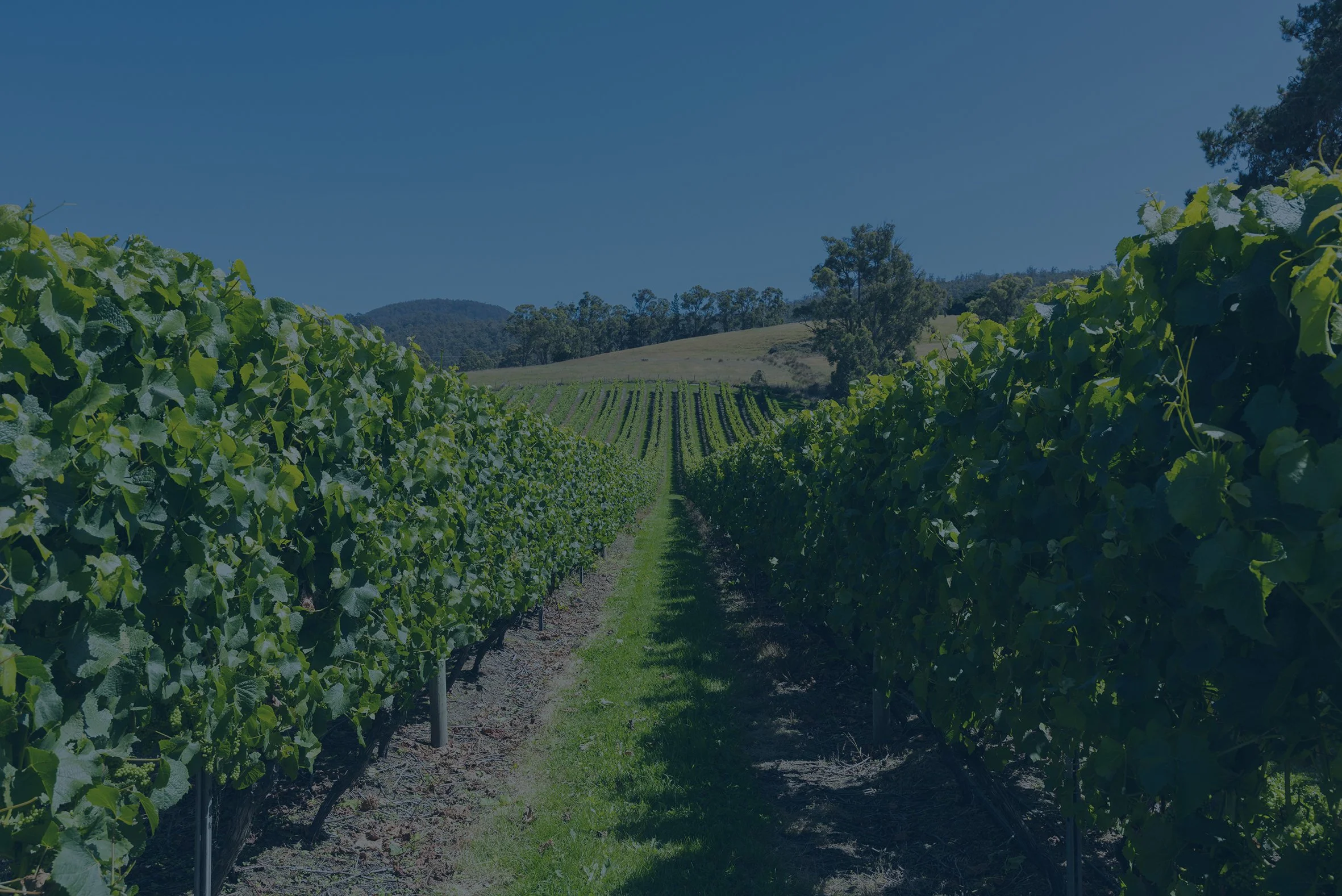ROADNIGHT MUSING – OCTOBER 2025
Horticultural Land Values
INTRODUCTION
In preparing this edition of Roadnight Musings, we spoke with several leading valuation practitioners working across the Murray–Darling Basin and other key horticultural regions. Their collective insights form the basis of the following summary on horticultural land values — an overview of how investors and valuers are reading current conditions across almonds, vineyards, and other permanent crops.
SECTOR OVERVIEW
Q: Which horticultural commodities are experiencing the most pressure at present, and what’s driving that?
A: The bulk wine sector continues to face significant challenges — low commodity prices, rising input costs, domestic oversupply, and changing consumer preferences. Bulk red grape prices have fallen by roughly 50% since their 2018–19 peak, with recent warm climate vineyard transactions averaging $10,000–$20,000 per ha, compared with $35,000–$45,000 per ha five years ago. Table grapes are also navigating volatile export markets and softer domestic demand.
Q: How significant is the influence of water entitlements and delivery security on horticultural valuations?
A: Most institutional investors employ sophisticated water-trading and risk-management strategies to manage allocation price volatility. Accordingly, the absence of a full entitlement portfolio is not usually viewed as detrimental, particularly within the Southern Connected Murray–Darling Basin.
Recent market evidence suggests that properties with embedded high-reliability water are achieving premiums of around $3,000–$4,500 per ML capitalised into land value, reflecting strong buyer preference for security of supply.
ALMONDS
Q: How have almond orchard values evolved over the past 5–10 years?
A: A major cycle of corporate investment between 2016 and 2021 saw mature, well-watered orchards in Sunraysia and the Riverland reach $60,000–$80,000 per planted ha, supported by robust farm-gate returns.
Difficult seasonal conditions through 2022–23, rising input costs and weaker returns (kernel prices fell to around $5.50 per kg AUD) softened buyer appetite and slowed transaction activity.
Improved export performance and a recovery in prices to roughly $8.50 per kg AUD have since restored confidence, and demand for high-quality assets is again strengthening.
Q: Which types of almond properties are achieving premium prices — and which are trading at a discount?
A: Large-scale, well-established orchards with balanced varietal mix, full water security and strong management history continue to achieve top-tier values — often $75,000–$85,000 per ha for premium assets.
By contrast, smaller or inconsistently managed properties, or those requiring capital reinvestment, typically transact at a 25-50 % discount, if they sell at all.
Q: Are there regional differences in almond orchard values — for example, between the Riverland, Sunraysia and Riverina?
A: There is no clear regional hierarchy, but nuanced differences exist:
Riverina — enjoys excellent water reliability and access to both surface and groundwater; typically values 10–15 % below comparable Sunraysia assets due to rainfall risk during harvest.
Sunraysia & Murray Valley — premium soil types and processor proximity underpin solid pricing, though water-delivery constraints are emerging.
Riverland — proven production base but tightening allocation security is an increasing consideration for buyers.
Q: Are institutional investors still the dominant buyers in the almond sector?
A: Yes. Most large-scale developments and acquisitions continue to be driven by institutional capital and managed investment vehicles, though some corporate and family operators are selectively pursuing consolidation opportunities.
Q: What is your outlook for almond orchard valuations over the next 3–5 years?
A: The outlook remains broadly positive. California continues to face structural production challenges, while Australia benefits from tariff advantages into key export markets such as China and India.
Assuming kernel prices stay above $8 per kg AUD farm gate and water allocation costs below $300 per ML, orchard values are expected to remain firm or strengthen modestly in the medium term.
WINE GRAPES AND TABLE GRAPES
Q: How have vineyard values shifted in recent years?
A: Values in bulk-wine regions such as the Riverina, Riverland and Sunraysia have fallen sharply, with typical properties now trading between$10,000–$20,000 per ha, down from $35,000–$45,000 per ha five years ago.
Premium red-grape districts (Barossa, Clare, Coonawarra) have recorded smaller declines — generally 10–20 % below previous highs.
Q: Which vineyard assets are holding value, and which are proving difficult to sell?
A: Vineyards with a strong production record, balanced varietal spread and good age profile continue to attract demand, although buyers remain selective. Under-performing or poorly managed assets often face extended marketing periods or are repurposed for alternative uses.
Q: Are there notable regional differences between premium and bulk production areas?
A: Yes. Cool-climate regions such as Tasmania, Yarra Valley and Adelaide Hills are experiencing robust demand, with established vineyards often achieving $100,000–$200,000 per ha. This reflects a clear consumer shift toward premium, lower-volume wines and the broader “premiumisation” trend.
Q: How are table-grape values trending, and what factors are shaping the outlook?
A: Table-grape valuations have eased since their 2020 peak, now averaging $90,000–$110,000 per ha for well-located vineyards planted to protected varieties — down roughly 20–30 % from previous highs.
Export volatility, rising costs and domestic oversupply remain key pressures. Properties with modern PBR-protected varieties and export accreditation continue to attract buyer interest, while older plantings of public varieties typically appeal only for redevelopment.
BROADER PERSPECTIVE
Q: Beyond almonds and grapes, are there any horticultural sectors you view as undervalued or poised for growth?
A: The olive industry is regaining investor attention. Global olive-oil prices have more than doubled since 2022, and commercial scale olive groves are expected to trade in the near future in the range of $40,000–$60,000 per ha, up from sub-$30,000 per ha previous paid for sub-scale operations. Greenfield and brownfield development activity is expected to follow.
Q: Looking ahead, what structural shifts are likely to shape horticultural land values?
A: Ongoing corporatisation and vertical integration are expected as producers seek scale, efficiency and downstream control of processing and marketing.
Sustainability credentials, traceability, and access to ESG-linked finance are also becoming increasingly influential in valuation and investment decisions, particularly among institutional investors assessing long-term risk and liquidity.


